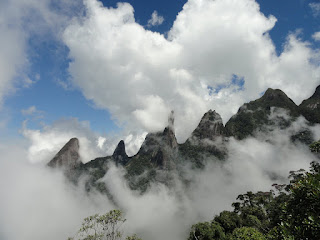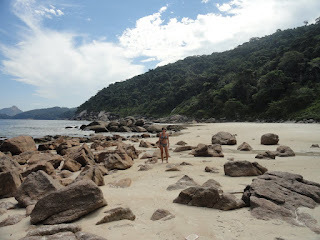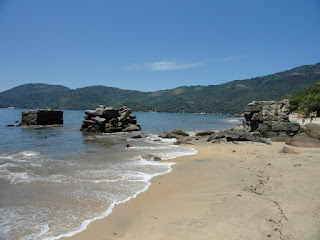As there is nothing really to see in Belo Horizonte, it is
simply not a tourist town, you may wonder why we are staying an extra day
there. The answer is simply called
INHOTIM. This is a place we heard about
from a German couple we met in Paraty, and we have since looked up. It is hard to describe, one third botanical
gardens, one third art gallery and one third open air art installation. It is located 50km outside Belo so we get a
taxi to the bus station and get the one bus a day that goes there at 09:15.
The journey there isn’t great. As with all the roads in Minas Gerais it is
hilly, but also the added extra of speed bumps really makes for an unpleasant
journey. But once we get there all is
forgotten (after a quick drink) as we begin to look around. As with a lot of modern art some of it is
pretty way out there, but some of it is pretty clever and some of it is quite
fun. For example one of the galleries
has rooms with hammocks, balloons, or a bouncy floor, and the art is how we
interact with them (lazing in a hammock is now art!). Another was a large number of flower pots in
the shapes of different letters and the art is how we arrange them. So there is some fun. The best part of all was the price; we got
there on a day when they were giving free entry.
For dinner we wanted to go to one of the best restaurants in
Belo. We knew it was a bit outside the
centre of town, so we had to get a taxi, but it wasn’t very comforting when the
taxi driver didn’t know where it was.
But he had GPS so we thought it would be OK, except he didn’t know how
to follow the instructions on how to exit a roundabout. Eventually after explaining it to him we got
there, but it was a bit worrying as we went down some wrong turns. The
restaurant itself was supposed to be in one of the best neighbourhoods in Belo,
but when we got to it there was an armed guard standing in the door. His job was to escort diners to and from
their cars. The people of Belo need some
lessons on what makes a good neighbourhood.
Not armed guards. Anyway the meal
was nice and then we got a taxi home. We
had decided to skip the Belo highlight, a church in this area designed by Oscar
Niemeyer, because of the dodginess of the area.
But we still got a good look at this dodginess as a weirdo jumped out in
front of our taxi on a dark road. We
were sure it was a robbery but our taxi driver just sped past him, later saying
he was either a drug addict or a mental patient. However it doesn’t do anything to change the
view that Belo is not really a place for tourists.














































